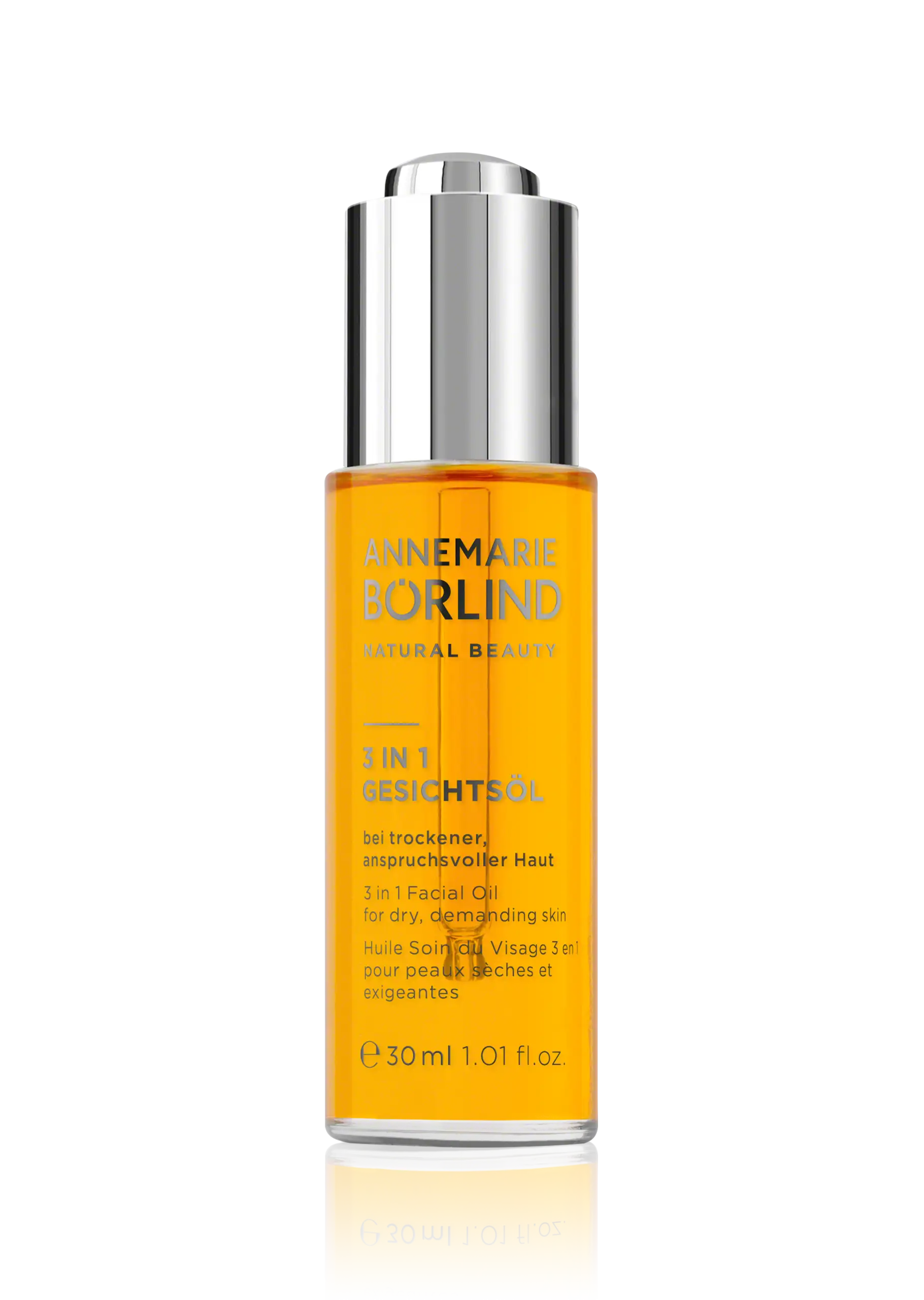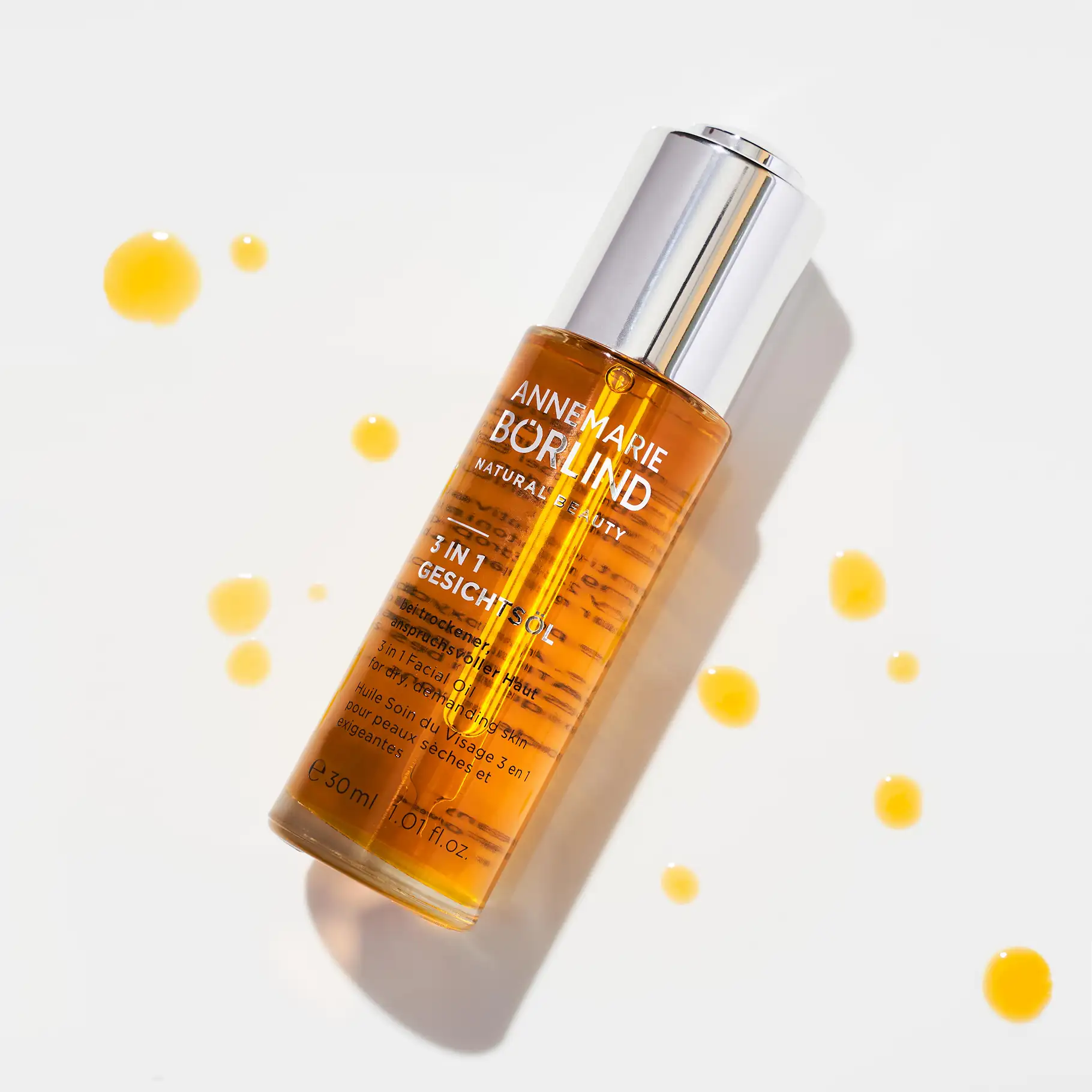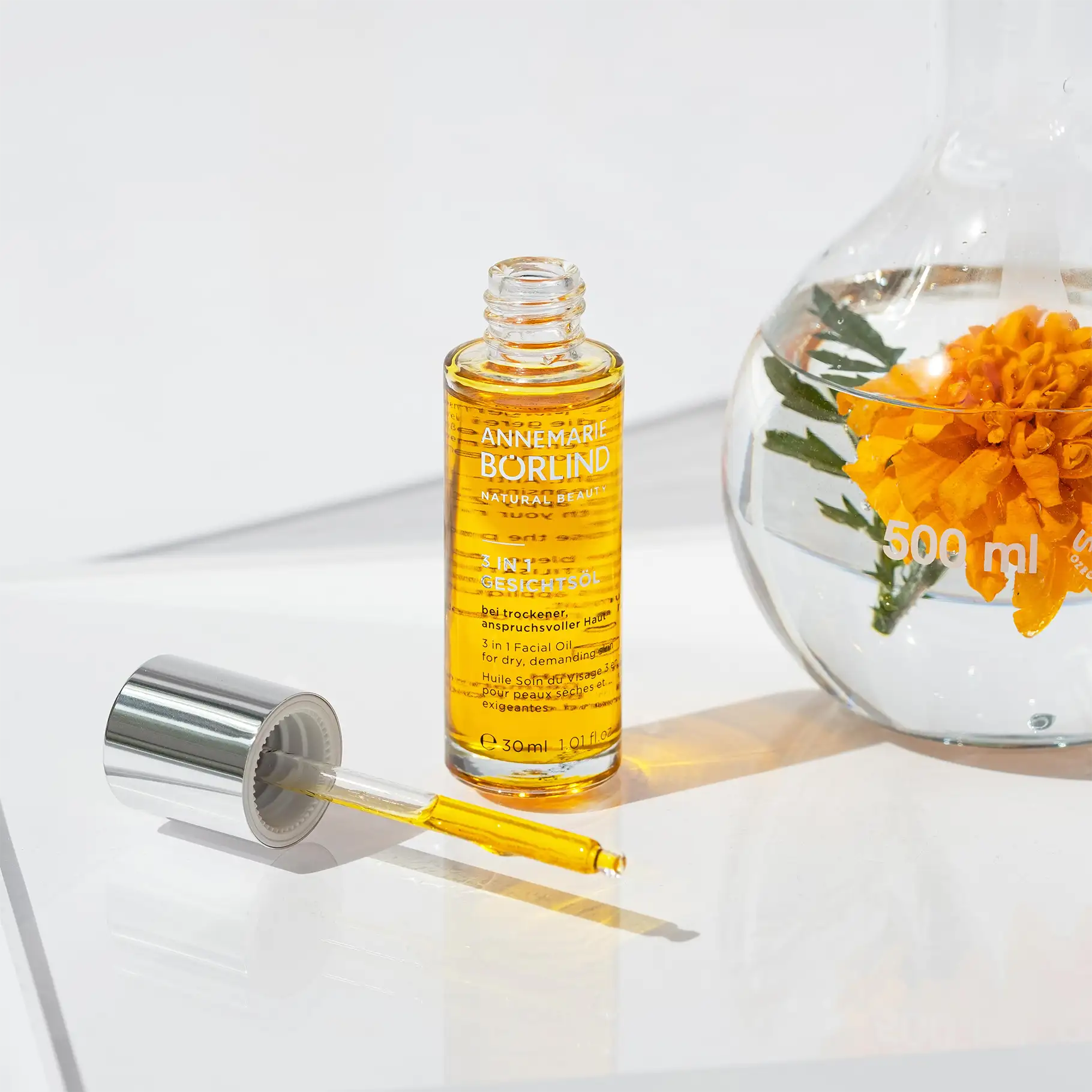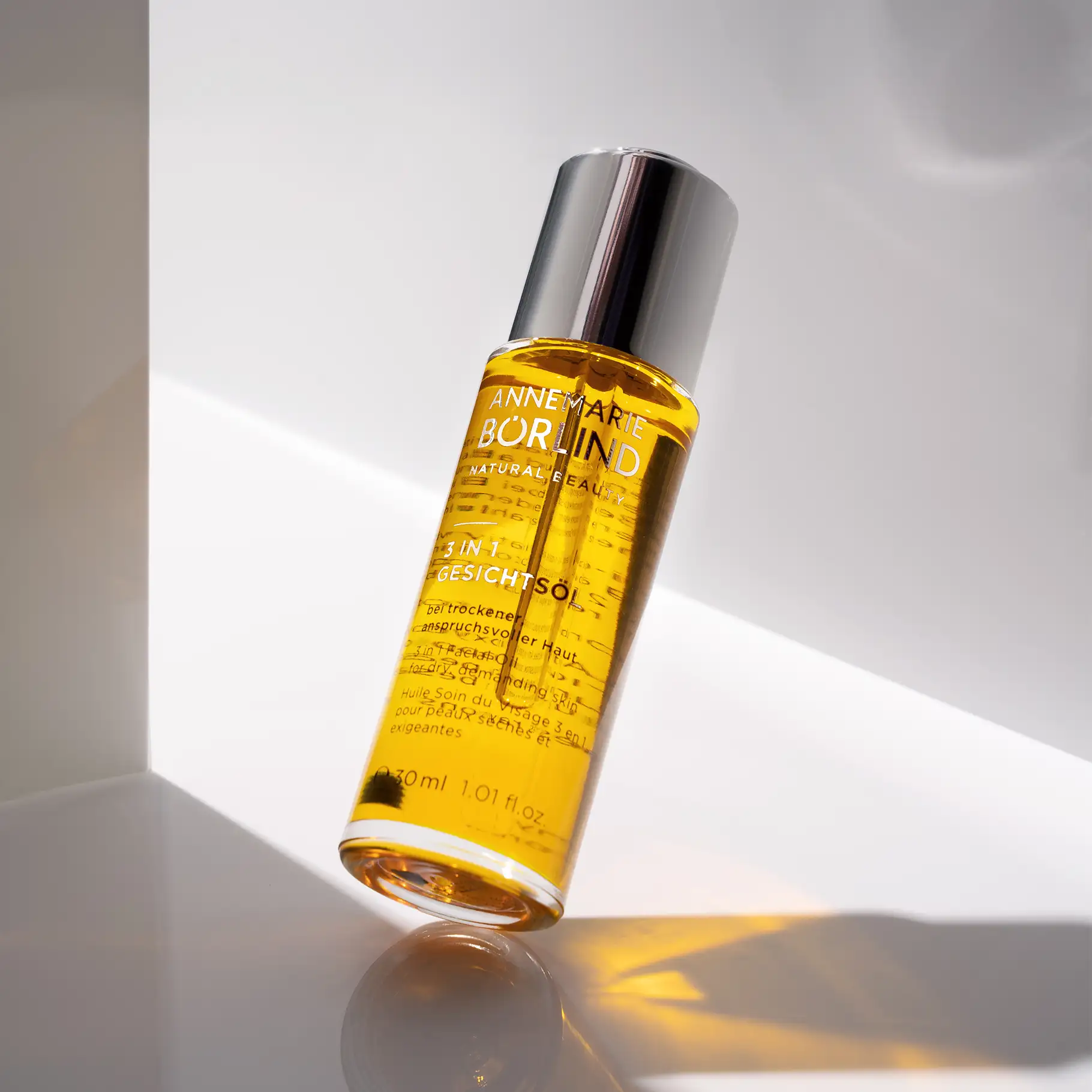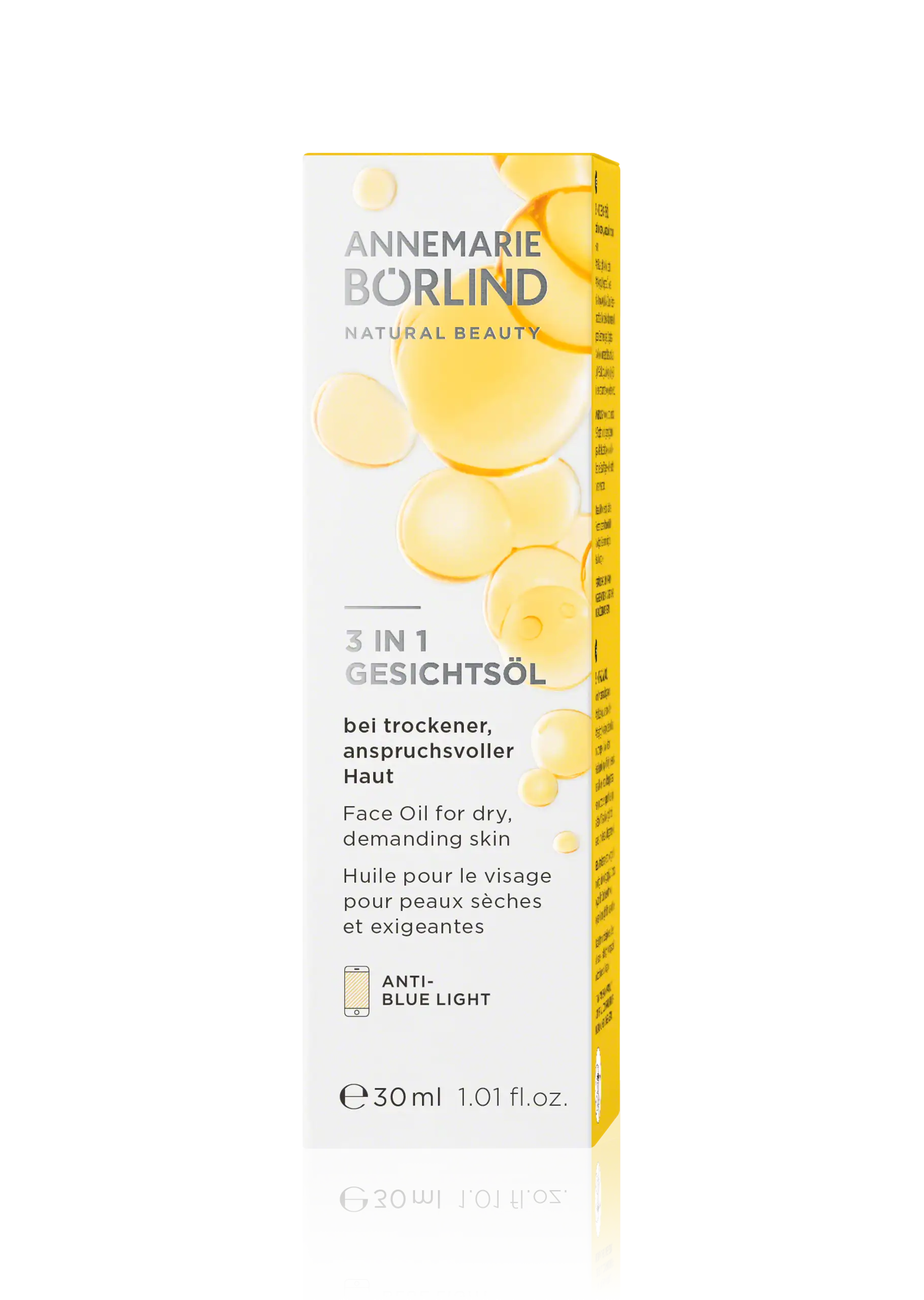3 IN 1 FACIAL OIL
for dry, demanding skin
Usage
- strengthen the skin barrier and gives suppleness
- protects from blue light radiation
- provides relaxed and regenerated skin
Skin type



Sustainability and Certification



Our quality promise
- No genetically modified plants
- Confirmed efficacy and skin-compatibility
- No silicones
- No mineral oil derivatives (such as kerosenes, PEGs)
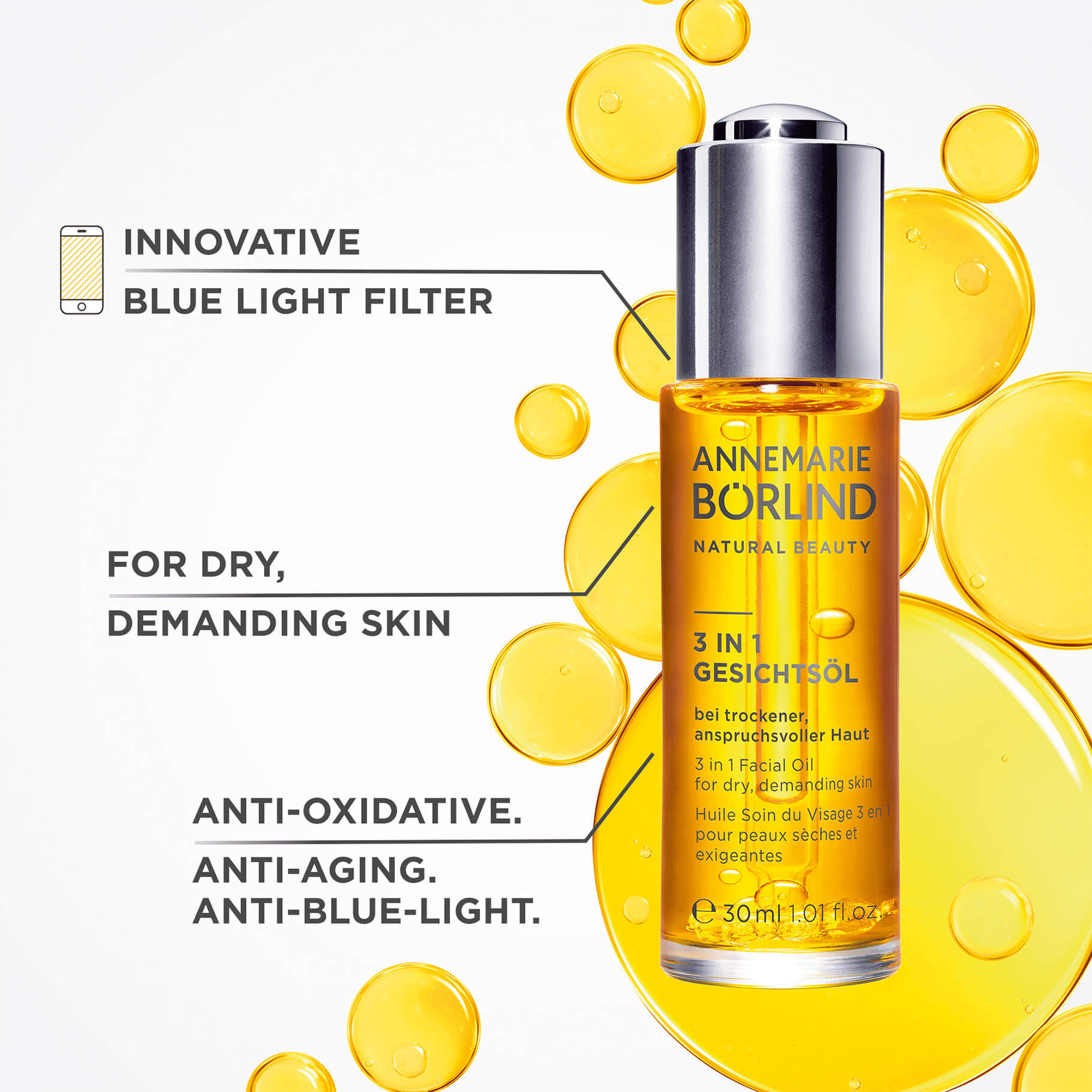
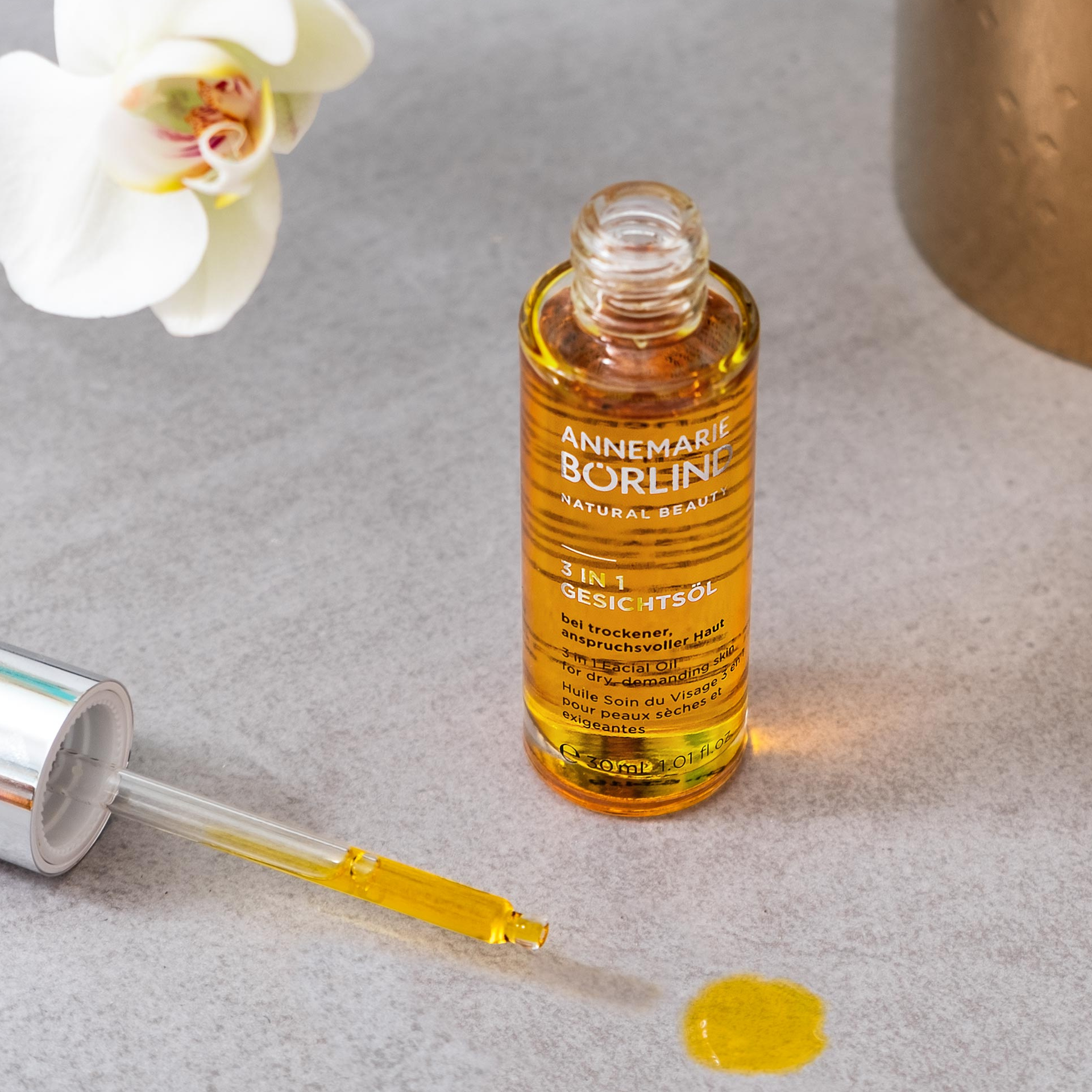
Nourishing oils such as Inca omega oil, kahai oil and Himalayan cherry oil fortify the skin’s natural barrier and add suppleness. Marigold protects against blue light radiation.* This anti-aging dry oil leaves skin relaxed and regenerated.
*Blue light from mobile phones, tablets, televisions or visible light. Damages cells and contributes to skin aging.
Efficacy and skin-compatibility scientifically confirmed. Free of mineral oil derivatives. Vegan.
Our ingredients

Marigold
Protects against blue light from mobile phones, tablets, televisions or visible light that damages the skin and accelerates skin aging.
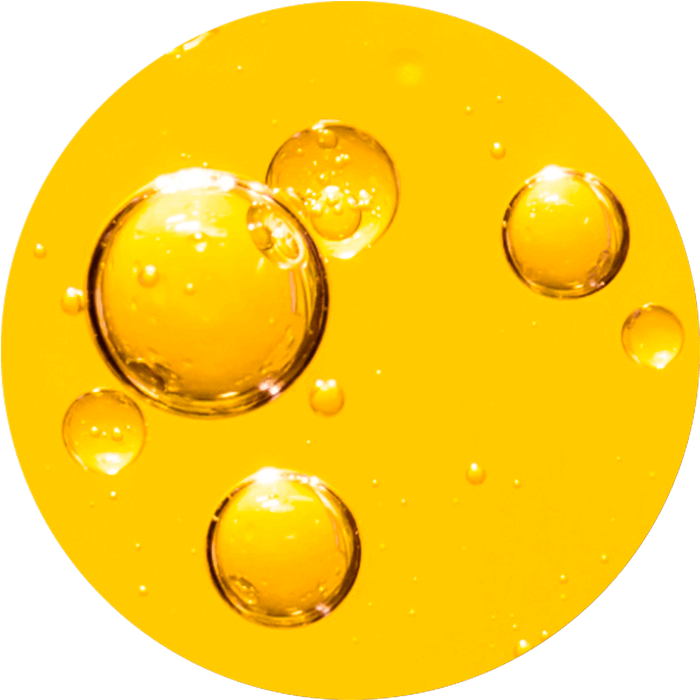
Precious botanical oils
Nourishing oils like Inca omega oil, Kahai oil and Himalayan cherry oil fortify the skin’s natural barrier and support its suppleness.
All ingredients







